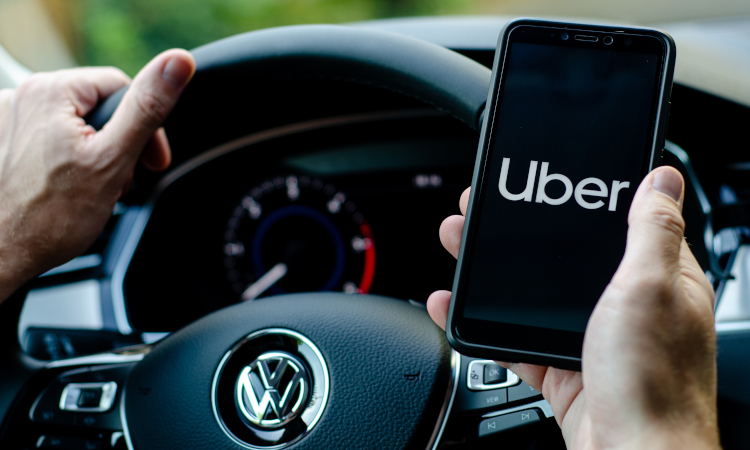
After getting a primary to have a look at Uber’s financials on Thursday, analysts are divided regarding Uber’s expected IPO valuation of as lots as $100 billion. Asked whether or not the $ninety billion to $100 billion valuations at which Uber is predicted to change its initial public presenting, Wedbush Securities analyst Dan Ives stated, “I assume it’s all in the attention of the beholder and I assume its what investors are willing to pay.” But the one element they could agree on is that no one actually has a surefire manner to assess it.
Without preceding income reports to function as a benchmark or income to evaluate, Wireless Fund Lead Portfolio Manager Paul Meeks stated the quality way to understand the valuation is thru its sales numbers. Pricing the stock at six-instances income, which he stated would be “a pretty healthy valuation even for an established tech organization,” Uber’s cost should clearly be about $ seventy-three billion. Similarly, he predicted Lyft should be priced at $50, consistent with a percentage with a valuation of $14 billion.
“I don’t like thoughts when an agency after they pass public if they have losses,” Meeks said. But the reality that Uber’s losses continue to document enormous losses is what offers him pause. Uber reported an adjusted EBITDA loss of $1.85 billion in 2018 and showed a slowing revenue increase, which has raised a few concerns for traders and analysts as they watch Lyft’s stock sink from its IPO fee of $ seventy-two to $59.90 as of Friday’s close. Fear of missing out. Ives and Meeks both related Uber’s IPO to some other famous tech presenting that debuted with steep losses: Amazon’s. For Ives, the hypothesis round Uber’s valuation represents “the fear of lacking out on the next Amazon.”

“That’s a huge fear,” Ives stated. “That became a seminal event in phrases of investing in tech shares in the final twenty years.” While Ives said, Uber represents the primary stock in the beyond few years that traders view as having the potential of Amazon-degree increase, evaluating the two is still a fool’s errand. “That path to profitability is fuzzy. And additionally comparing Uber to Amazon, it’s like evaluating an extraordinary high faculty basketball participant to LeBron James,” Ives stated.
For Meeks, the contrast seems to function extra of a warning for Uber. He noted that supplying Amazon Web Services, Amazon’s cloud product, became the turning point for the stock and now is key to its profitability. As of its Q4 2018, AWS represented 58% of Amazon’s usual operating profits. But Meeks sees less opportunity in Uber’s bets outside of its core ridesharing commercial enterprise, like Uber Eats and Uber Freight.
“They’ll try to leverage their platform into different things. However, the different things can be transported because’s their gig, and the delivery business has numerous setup gamers,” Meeks stated. Eventually, he said, “Amazon might transport all freight.”
Justifying $100 billion
There are a few ways Uber’s valuation may be justified, in line with the analysts interviewed for this newsletter, however proper now, they stay hard to expect. DA Davidson Senior Research Analyst Tom White stated that he is searching out three matters if you want to justify at $100 billion valuations. First, he’d want to look proof that Uber ought to enhance its revenue increase significantly. Second, he’d search for signs that stress on Uber’s margins will now not closing too long. And 0.33, he’d try and apprehend if investors are inclined to pay a top rate for Uber in comparison to Lyft.
Outside of its ridesharing enterprise, wherein it directly competes with Lyft, Uber has a danger to distinguish itself is considered one of its different groups take off. At the same time, Lyft has expanded more slowly, to be had in just two international locations and centered mainly on ridesharing and other mobility areas. Uber has taken an exceptional approach, increasing into 63 nations and taking over different tasks. That could ultimately bode nicely for Uber.
“I think a huge cognizance is Freight and Eats. Those are key ingredients within the recipe for success,” Ives said. “I suppose the one element that stood out in the S-1 is just how huge the revenue and the possibility have been there relative to what traders were watching for.” Uber Eats, as an instance, grew gross bookings from $1.1 billion in Q4 2017 to $2.6 billion in Q4 2018.
Another street to greater profitability is through automation for its ridesharing business. Currently, Uber handiest receives a cut of each journey it gives, given that drivers take a share. On top of that, it has to offer steep incentives to both drivers and customers to get them to apply their provider in an aggressive marketplace; something Uber even listed as a threat issue for its enterprise. But if the organization someday can reduce the driving force and use self-riding cars as a substitute, its road to profitability will become an awful lot clearer.
“If autonomous riding in the future turns into an element, then that could make that enterprise properly worthwhile,” Meeks said. But he stated Uber can’t lean heavily on that now because “I don’t see it as a mainstream factor for decades.” With little to go off of, buyers are possibly already seeking to Lyft’s overall performance as Uber readies its roadshow. “For better or worse, these two are tied on the hip,” Meeks stated.







